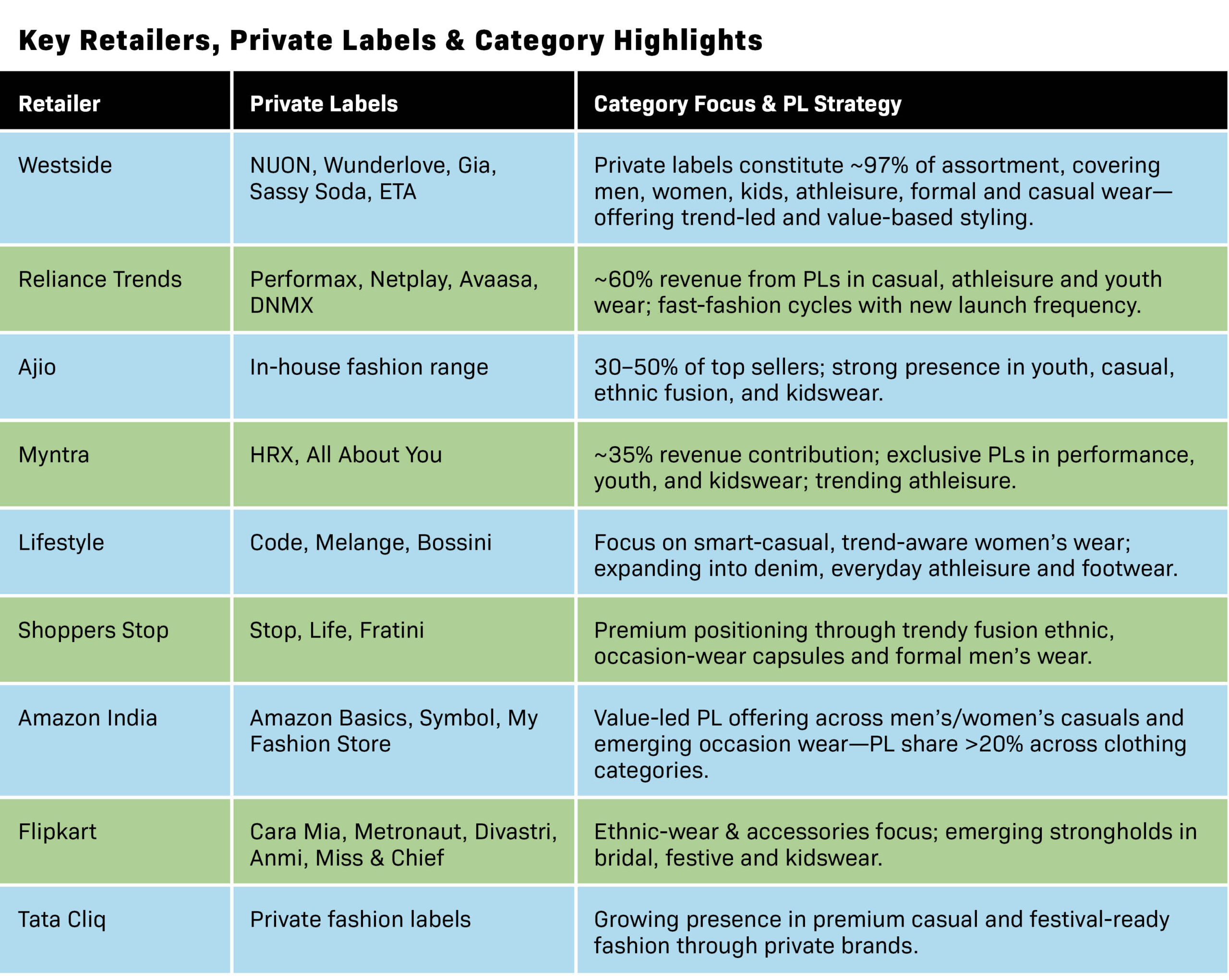Retailers are no longer just selling fashion—they are becoming the brands.
From fast-fashion giants to department stores, private labels now define India’s style economy.
Private labels have quietly emerged as power players in Indian fashion. No longer content with being cost-effective substitutes, they’ve become key differentiators in menswear, womenswear, kidswear, athleisure, and smart casuals—rivaling national and international brands. With adoption accelerating across segments, demographics, and price tiers, Indian retailers are leading a fundamental shift in the fashion ecosystem.
Market Scope & Consumer Behavior
- Online fashion is expected to reach USD 36 billion by 2029 at a 22% CAGR.
- 52% of Indian shoppers now regularly choose private labels, and 70% believe their quality matches branded alternatives (EY, May 2025).
- Consumers are noticing: 74% see more store brands, and 70% spot them at eye level across physical and digital retail spaces.
With organized fashion retail valued at USD 58 billion in 2023 and forecast to double by 2030 (12.6% CAGR), house brands are firmly in the driving seat.

Strategic Edge & Consumer Impact
Why these PLs dominate:
- Margin Leverage: Retailers realize 30–60% higher profitability—PLs bypass royalties and ad expenditure.
- Complete Control: Private labels enable integrated design, production, pricing, and inventory management.
- Agile Launch Cycles: Retailers can design, test, and refresh collections within weeks, responding to regional and seasonal trends.
- Brand Trust Rebuilt: Rising trust—70% compare PL quality to branded counterparts; 52% prefer them for value (EY, 2025).
- Omnichannel Visibility: PLs are featured prominently in-store, apps, and websites, reinforcing loyalty and familiarity.
- Data-Led Innovation: Retailers use analytics to curate mini-capsules targeted at demographics like youth, women and children.
- Scale via Co-Manufacturing: Outsourced production helps scale quickly while maintaining cost efficiency.
What Lies Ahead
- 50% PL Share: Fashion private labels are projected to make up 45–50% of organized fashion retail by 2030.
- Digital Flagbearers: Platforms like Ajio and Myntra are expected to drive PL share well over 50% among best-sellers.
- Premiumization & Sustainability: Increasing PL focus on ethical fabric, sustainability, and capsule collection design.
- Ethnicwear PL Expansion: Traditional wear-focused house brands—especially on festival occasions—will continue gaining market share.
Fashion Private labels have moved from the margins to the mainstream in Indian fashion. No longer just a lever for higher margins, they are now a reflection of a retailer’s brand-building ability, consumer understanding, and design-led innovation. For a future where experience, affordability, and speed matter more than legacy, it’s the private labels that will set the pace.
As retailers shift from “stockists” to “style creators,” the brands they own in-house may well be the most valuable ones they build.




